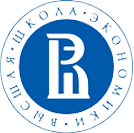The authors of the paper stress that digital technologies have considerable potential to be employed in the fight against corruption. In this context, they can be basically used in two areas:
1) to prevent and counter corrupt practices by detecting, analysing, investigating, forecasting and monitoring corruption offences;
2) to indirectly influence corruption by promoting the principles of effectiveness, accountability and transparency in public institutions.
At the same time, the development of advanced technologies and digital solutions pose new challenges and create additional vulnerabilities also with respect to corruption. In particular, digital technologies can be employed in money laundering, fraud and cybercrime; their use implies the need to strike a balance between regulation and innovation and make ethical and human rights considerations.
The report explores the risks and opportunities associated with the use of such digital technologies as artificial intelligence (hereinafter referred to as AI), machine learning and deep learning, blockchain and other distributed ledger technologies, and big data analytics with the aim to counter corruption.
Artificial intelligence, machine learning and deep learning
In spite of the fact that the examples of the use of AI in anti-corruption are not numerous, its employment can considerably facilitate the detection, analysis and forecasting of corruption offences by:
- accelerating analysis of large amounts of data that can be too complex or cumbersome for the staff of the competent bodies: this will allow increasing efficiency in terms of time and other resources and focusing on scrutinizing the most relevant data such as those that most probably indicate that corruption offences have been (may be) committed. For instance, as we wrote, the use of AI in the United Kingdom had allowed investigators to analyse over 30 million documents and select the data relevant to the investigation in a matter of months, whereas their manual processing would have taken much more time;
- ensuring early detection of unusual patterns and “red flags” indicating potential corruption offences with a high level of accuracy. For example, Spanish researchers created a model based on neural networks that calculates the probability of corruption in Spanish provinces and the conditions that favour it; this tool can allow the authorities to take preventive measures to mitigate corruption risks. In a region of the Czech Republic, the publicly available financial and industry data of all contracting firms from the country were analyzed to predict which firms were politically connected; using machine-learning techniques, the researchers found that over 75 percent of firms with political connections could be accurately identified;
- monitoring compliance with anti-corruption standards: on the one hand, AI can be employed by the regulated organisations to put business processes in line with the established requirements; on the other hand, it can be used by the regulatory authorities to detect the infringements of the requirements or deliberate attempts of fraud. For example, Shield FC, an Israeli company, created a platform that utilises AI, natural language processing and visualization capabilities to automate and orchestrate the complete communications compliance lifecycle, mitigate risk and make surveillance efficient. Dozorro, launched by Transparency International Ukraine, is an online monitoring platform and a set of intelligence tools which help to considerably increase the effectiveness of detection of violations in public procurement: from 2016 to 2018, 22 criminal charges and 79 sanctions were issued as a result of the platform’s ability to detect violations;
- reducing human discretion that entails additional corruption risks by transferring a number of functions to AI.
However, the use of AI technologies not only creates new opportunities for combating corruption but also poses new threats:
- AI can be employed in fraud or corruption schemes;
- depending on the quality of data and algorithms used, AI can lead to gender and racial biases;
- uncontrolled use of AI can violate data privacy;
- complexity of AI algorithms makes it impossible to tell exactly how the calculation resulting in a given output is performed, which inevitably results in a lack of transparency that makes it difficult to interpret the reasons for decisions made by AI, which can result in a lack of trust in the system. For instance, China’s “Zero Trust” Anti-Corruption AI System is an experimental anti-corruption AI system that can access more than 150 protected databases in central and local governments for cross-reference, and draw sophisticated, multiple layers of social relationship maps of government employees to detect indicators of corruption offences such as increases in bank savings, a new car purchase or bidding for a government contract under the name of an official or one of his family members or friends. Once its suspicions have been raised it will calculate the chances of the action being corrupt. If the result exceeds a set marker, the authorities are alerted. However, the limited ability to explain the process the system has undergone to reach such a conclusion reduces trust in this instrument. Consequently, many local governments have decommissioned “Zero Trust”.
In order to mitigate at least some of the abovementioned risks the authors of the report recommend being guided by the following principles in implementing AI technologies:
- steer AI systems when designing and developing them to address structural and occasional bias in decision-making, and to mitigate corruption risks in the use of different AI technologies;
- invest in good quality data that will be subsequently used by AI;
- address gaps in transparency and accountability of AI technologies to build public trust in these systems.
Blockchain
Blockchain is a type of distributed ledger technology (DLT) that has considerable potential for ensuring transparency of activities of bodies and entities and security of the data administered by them. This technology can be deployed for anti-corruption efforts in areas such as land registries, budget transparency, enforcing contracts, conducting transactions, and supply chain management.
The authors of the report stress that DLT can turn out to be useful for the fight against corruption due to the following arguments:
- it can create a transparent and accountable system where information can be verified, impedes the manipulation of data and fraud or corrupt practices by perpetrators. In particular, blockchain technology was used by the World Food Programme (WFP) as part of its “Building Blocks” pilot to explore whether direct cash transfers to refugees can be made more efficient, secure and transparent also with a view to reducing corruption risks such as bribery and extortion through interaction with intermediaries;
- transactions information stored on the blockchain cannot be changed or deleted, as long as the agreed consensus mechanism is not compromised. This allows creating a full and publicly accessible database of all transactions and reduce risks of unfair alteration of data. For instance, UNDP has supported a project to build a land registry using Ethereum blockchain technology for an Indian city, which allows establishing a single source of ownership status and the history of a property;
- blockchain is able to track the precise movement of money more accurately thereby creating opportunities for supply chain management, where blockchain can be useful in record keeping and provenance tracing and tracking. For example, the World Wildlife Fund employs blockchain technology to overcome corrupt and illegal activities in fisheries: the project used a combination of radio-frequency identification tags, quick response (QR) tags and scanning devices to collect information about the journey of a tuna at various points along the supply chain, which is then recorded using blockchain technology thereby ensuring a digital, transparent and tamper-proof record of information that is accessible to everyone; and consumers can have the certainty that they are buying legally caught, sustainable tuna with no slave labour or other harmful practices involved.
However, the use of DLT has certain associated risks, including:
- blockchain technologies can be misused for private gain, such as using cryptocurrency for money laundering, illegal transactions and tax evasion. Criminals can take advantage of unregulated cryptocurrency exchanges or decentralized peer-to-peer networks that ignore anti-money laundering regulations thereby depriving law enforcement from the possibility to trace such illicit transactions and hold perpetrators liable;
- the data on the blockchain can hold sensitive information linked with an individual identity, which can be de-anonymised; as a consequence, blockchain can be used as a tool to abuse power and gain dominant control of the system.
To reduce potential risks that the use of DLT entails the authors of the report recommend:
- drafting and adopting regulations on different aspects of the use of the abovementioned technologies that would cover the issues related to jurisdiction, risks and liability;
- providing for the creation and implementation of digital infrastructure and processes that would ensure due functioning of relevant technologies.
Big data analytics
Big and complex data analytics can be used in two major lines of anti-corruption action:
1) to identify, investigate, monitor and audit suspicious operations and assess corruption risks. For example, big data analytics were deployed by investigative journalists working on the Panama and Pandora Papers (in particular, they used such graphic platforms as Neo4j and Linkurious) and Brazilian investigators in the Operation Car Wash; the Corruption Research Center Budapest uses big data analytics to monitor public procurement procedures from EU countries by searching for abnormal patterns, such as exceptionally short bidding periods or unusual outcomes (e.g. no competition for the winning bid, or bids repeatedly won by the same company); the European Commission developed a software ARACHNE (meaning spider in Greek) that cross-checks data from various public and private institutions and helps to identify projects susceptible to risks of fraud, conflict of interests or other irregularities;
2) to raise awareness, improve nation-wide, sectoral or local anti-corruption policies and increase the efficiency of their implementation through predictive analytics and visualization that ensure more effective decision-making. For example, in one of India’s states the Chief Minister’s executive office launched a dashboard (a smart control panel providing real time information) which integrates information from various sources, including the helpline to register grievances related to all aspects of government functioning, to promote evidence-based decision-making.
Despite the multiple possibilities to use big data analytics to counter corruption its deployment is associated with certain difficulties, including:
- the need to ensure control over data privacy and misuse of relevant information: the Cambridge Analytica scandal clearly demonstrated how easily personal data can be extracted and exploited for political gain; public institutions gather huge volumes of personal data that in large part have confidential character, including information on income and finances, medical records, identification, political or economic information, which means that the risks of leaks and/or de-anonymisation of these data stored in public databases have even more severe consequences. The experts of the Independent Broad-Based Anti-Corruption Commission in one of Australia’s states highlights that unauthorised access, disclosure, or misuse of confidential information by public officials, are key enablers of corrupt behaviour, yet they are often rated as low risk behaviours by governments;
- the need to identify and understand the corruption risks in the processing of big data, from state capture to regulatory abuse, and adopt measures to mitigate them: taking account of the impact of findings of big data analytics on political processes, political decision-making and legislative initiatives, perpetrators can affect the data gathering process and exchange of information to achieve a more advantageous outcome of analysis;
- the provision of resources, including human resources, to conduct analysis and develop necessary skills whose lack is seen in many countries.
To overcome these difficulties the report recommends that countries:
- ensure that quality, reliable and accurate data are gathered for the competent authorities to conduct data analysis;
- develop skills of the personnel that carries out analysis by strengthening their analytical capabilities;
- create the necessary legal framework regulating, in particular, collection, storage and exchange of data, their protection and integrity;
- adopt measures for ensuring responsible use of data and respect for human rights in big data analysis.

